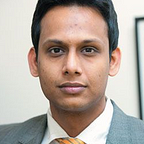Book Review: Resolving Disputes in Telecommunications
The recently published book, “Resolving Disputes in Telecommunications: Global Practices and Challenges” by R.U.S. Prasad could not have come at a more appropriate time. Recent press on the 2G Scam has generated tremendous public interest in policy formation in the telecom sector. In such a climate Mr. Prasad’s book, serves its objective well of outlining global practices and tentatively drawing up future policy goals. He highlights that policy flip-flops have happened in the past and will keep happening in future due to rapid growth and change in the sector. With this basic premise he outlines ways to ensure that the policy is not titled in favour of specific parties. As a former member of the TDSAT the author displays a commonsense approach to preventing litigation and acrimony in the sector. He states that most of these disputes can be prevented through, (a) effective consultations; (b) clarity in licensing conditions; © making licensing conditions forward looking.
Mr. Prasad also points out that the present system contains a labyrinth of telecom rules and regulations. Here plenty of opportunities exist for delay, exploiting uncertainty and private parties using superior skill in gaming and brinkmanship may thwart competition. Stakeholders have resorted to competing in courtrooms rather than in markets. Here the empirical findings of the ITU-World Bank Study on Dispute Resolution, 2004 are contextualised.
The only complaint which one may have with the book may be that even though it is written in plain and accessible language, it is sometimes dull and dry. In the end the book is a recommended read for lawyers and other having an interest in the technical details of telecom disputes.
Related articles
- India’s PM quizzed in telecoms dispute (ft.com)
- What Rajeev Chandrashekhar told Ratan Tata (ibnlive.in.com)
